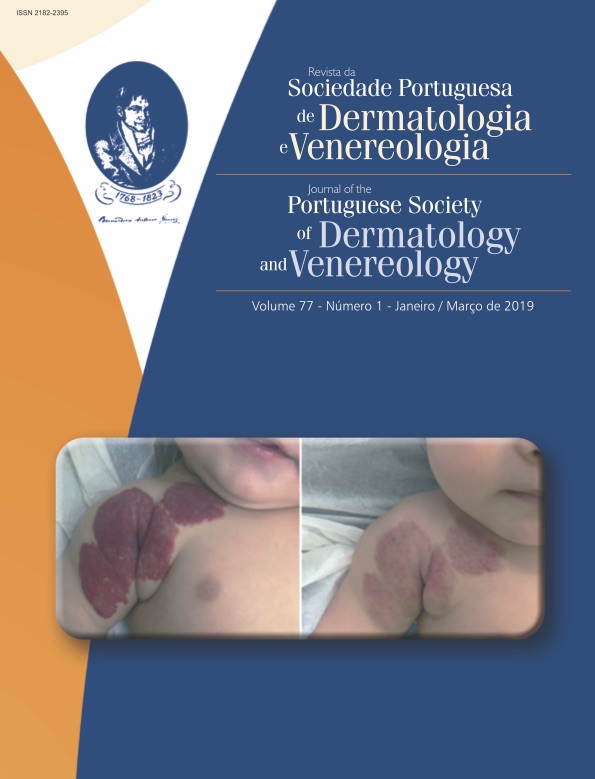Ulcerações Labiais Associadas a Comportamento Obsessivo-Compulsivo: Relato de Caso.
Resumo
As lesões auto-infligidas compreendem modificações cutâneas induzidas por um desvio do comportamento e demandam o envolvimento de diferentes profissionais da saúde. São mais comuns entre as mulheres de meia idade. Relata-se o caso clínico de um homem de 42 anos com diagnóstico de lesão ulcerada nos lábios superior e inferior, secundária a comportamento obsessivo-compulsivo. Os achados histopatológicos foram inespecíficos e os resultados de exames laboratoriais realizados não apresentaram alterações. Optou-se pelo acompanhamento conjunto entre a Psiquiatria e a Dermatologia, com seguimento de sessões de psicoterapia, mas o paciente acabou por abandonar o tratamento. Ressalta-se a importância do conhecimento das psicodermatoses pelo dermatologista, visando o diagnóstico e a terapêutica precoces, o que permitirá a prevenção de lesões destrutivas e mutiladoras.
Downloads
Referências
Gieler U, Consoli SG, Tomás-Aragones L, Linder DM, Jemec GB, Poot F, et al. Self- inflicted lesions in dermatology: terminology and classification- a posicion paper from the European Society for Dermatology and Psychiatry (ESDaP). Acta Derm Venereol. 2013; 93:4-12. doi: 10.2340/00015555-1506.
Roche L, Switzer V, Ramsay B. A retrospective case series of referrals to our psychodermatology clinic 2009-2016. J Eur Acad Dermatol Venereol. 2018; 32e278-9. doi: 10.1111/jdv.14816.
Kestenbaum T. Obsessive-compulsive disorder in dermatology. Semin Cutan Med Surg. 2013; 32:83–7.
Zaidens SH. Self- inflicted dermatoses and their psychodynamics. J Nerv Ment Dis. 1951; 113:395-404.
Harth W, Mayer K, Linse R. The borderline syndrome in psychosomatic dermatology. Overview and case report. J Eur Acad Dermatol Venereol 2004; 18:503–7. doi: 10.1111/j.1468-3083.2004.00965.x.
Azambuja RD. The need of dermatologists, psychiatrists and psychologists joint care in psychodermatology. An Bras Dermatol. 2017; 92:63-71. doi: 10.1590/abd1806-4841.20175493.
Aguilar-Duran S, Ahmed A, Taylor R, Bewley A. How to set up a psychodermatology clinic Clin Exp Dermatol. 2014; 39:577-82. doi: 10.1111/ced.12360.
Nico MM, Nagano CP, Fernandes JD, Lourenço SV. A destructive ulcer on the lower lip. Clin Exp Dermatol. 2010; 35:e180-1. doi: 10.1111/j.1365-2230.2009.03619.x.
Todos os artigos desta revista são de acesso aberto sob a licença internacional Creative Commons Attribution-NonCommercial 4.0 (CC BY-NC 4.0).








